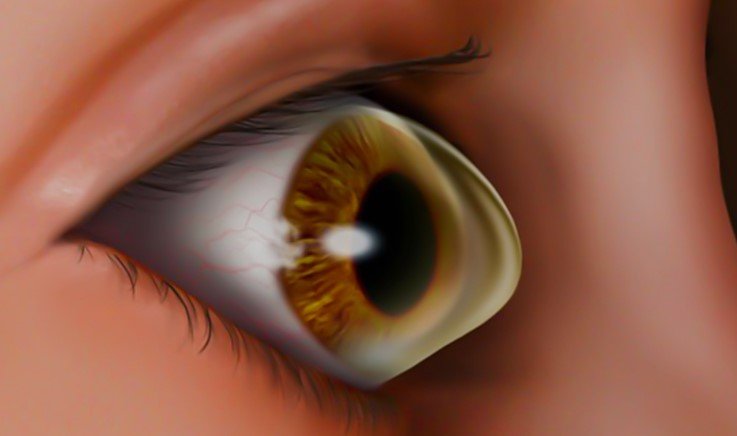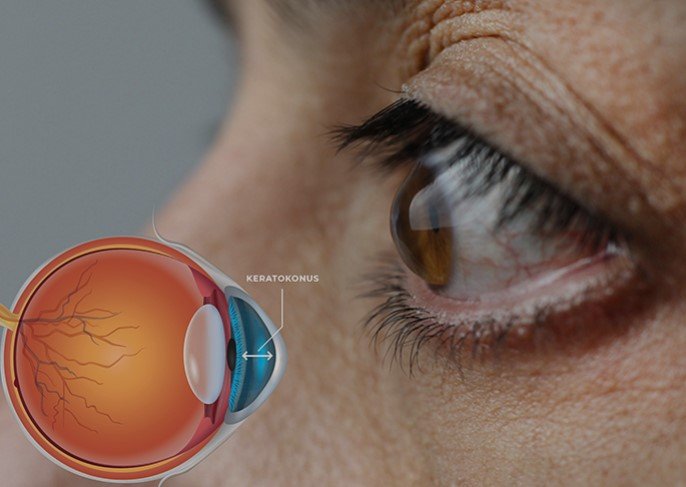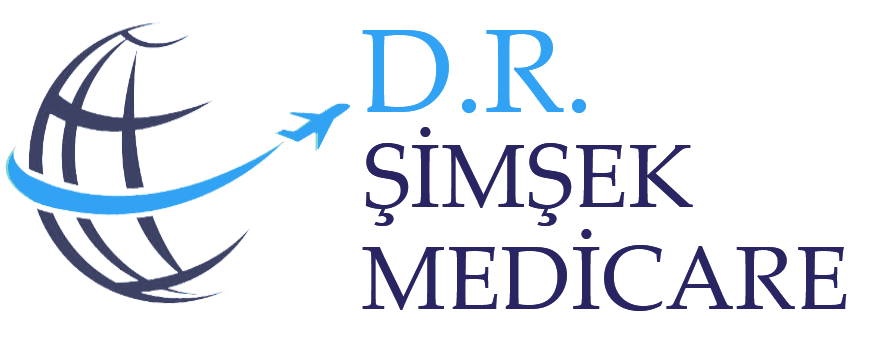Keratoconus Eye Deformity and Treatment Methods
Keratoconusis an eye disease in which the cornea protrudes thinner and cone-shaped than its normal shape. This can significantly affect the quality of vision and cause patients to have difficulty in daily life.
Keratoconus Symptoms
The most common symptoms of keratoconus are:
- Blurred vision and loss of clarity
- Eye strain
- Sensitivity to light
- Double vision (diplopia)
- Colors appear faded
- Progression of visual impairment
Causes of Keratoconus
Although the exact cause of keratoconus is not known, certain genetic and environmental factors can trigger the disease:
- Genetic Factors: It is more common in people with a family history of keratoconus.
- Immune System Disorders: Some immune system disorders related to the weakening of corneal cells can trigger this condition.
- Excessive Voltage (Eye rubbing habit)
- Environmental Factors: Prolonged exposure to UV light and certain eye diseases can predispose to keratoconus.


Keratoconus Diagnosis
Keratoconus can be diagnosed with the following tests:
- Corneal Topography (Mapping):
- It is the most important diagnostic method that maps the corneal shape in 3D.
- OCT (Automated Corneal Tomography):
- It provides a detailed examination of the corneal surface.
- Vision Tests:
- Tests to assess visual acuity and clarity of the eye.
- Corneal Topography (Mapping):
Keratoconus Treatment Methods
- Individuals aged 50 and over:
- The risk of diseases such as glaucoma and cataracts increases with age, and regular eye examinations are recommended.
- Family History of Eye Disease:
- Patients with genetic predispositions such as glaucoma, cataracts and diabetic retinopathy need regular eye examinations.
- Diabetes Patients:
- Diabetes can lead to retinal problems, so eye examinations are recommended at least once a year.
- People with Systemic Diseases:
- Hypertension, diabetes and other diseases can increase circulatory problems in the eye. For these reasons, regular examinations are necessary.
- People with Visual Impairment:
- An eye examination should be performed for complaints such as visual acuity problems, headaches and blurred vision.
Treatment Advantages of Keratoconus
- Improved Quality of Vision: Corneal treatments help patients to see more clearly and sharply.
- Glasses Independence: With specialized contact lenses, most patients can eliminate the need for glasses.
- Permanent Results with Corneal Transplant in Advanced Cases: In severe cases of keratoconus, corneal transplantation significantly improves the patient's quality of life.
Keratoconus Risk Factors
- Family History: Genetic predisposition is one of the most important risk factors.
- Eye Rubbing Habit: Pressure on the cornea can trigger keratoconus.
- Environmental Factors: UV light exposure and other environmental influences harmful to eye health.
- Immune System Disorders: Conditions specifically associated with allergic diseases.
What happens if keratoconus is not treated?
If left untreated, keratoconus can cause progressive deterioration and lead to severe vision loss. Therefore, early diagnosis and treatment are of great importance.
01
How exactly is keratoconus treated?
The most effective treatment is corneal cross-linking and special contact lenses. In advanced cases, corneal transplantation may be required.
02
Does keratoconus recur?
Keratoconus treatment usually allows the shape of the cornea to stabilize. However, in some cases it may continue to progress.
03
What are the earliest symptoms of keratoconus?
Blurred vision, sensitivity to light and eye fatigue may be the first symptoms.
Clearer Vision with Keratoconus
While keratoconus treatments improve patients' quality of life and provide better vision, early diagnosis and intervention are important.











